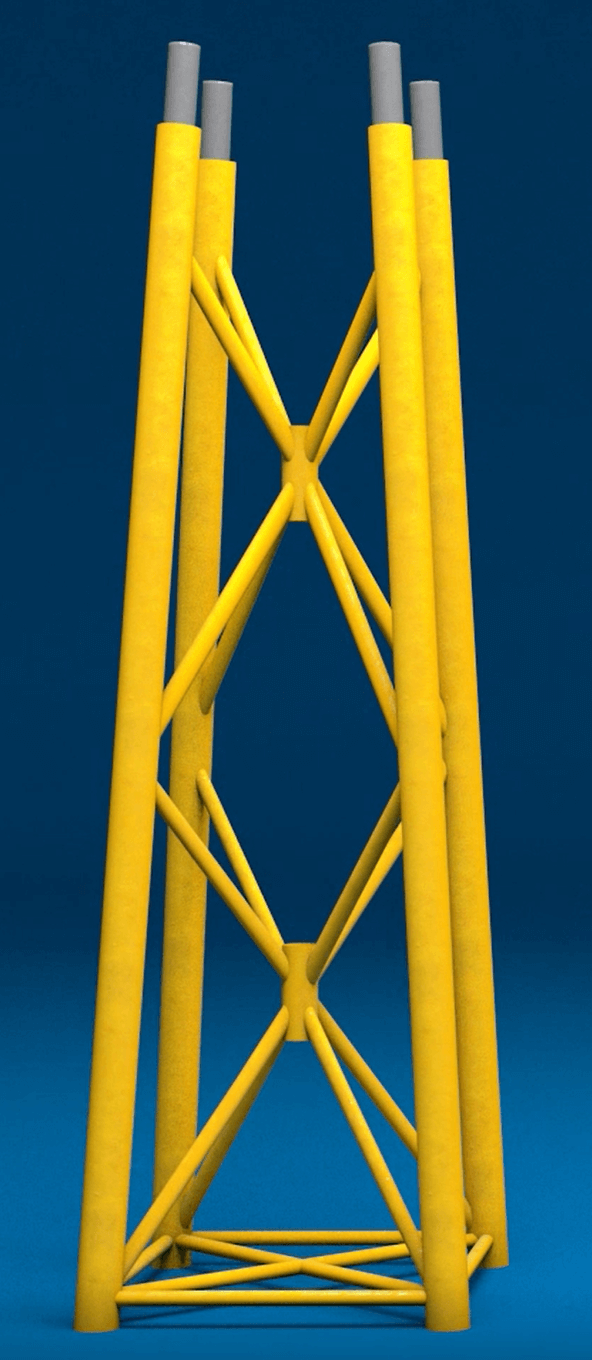
On typical wind-farm development, in water depths of 20 meters and above, the iJacket is estimated to deliver a significant reduction in overall foundation costs. Watch a video about how it’s designed here.
The industry standard in lightweight offshore jackets has typically been the x-braced configuration in which diagonal supports intersect between four steel-legged structures. For decades, jackets served to support offshore oil and gas platforms, and now the offshore wind industry is benefitting from and improving the design.
Case in point: Structural engineering company, IntelliSIMS (iSIMS), and energy service company, MORRISON, recently teamed up to optimize structural performance and provide significant cost savings for the offshore wind industry. The “iJacket” is the result, an offshore jacket that promises the same support as the x-braced design with additional benefits, according to the developers.
“We completely re-arranged the structural framing patterns of the conventional offshore jacket,” explains Justin Bucknell, managing partner with iSIMS. “This means we took the full-face frames and disposed of two of them and re-oriented the other two as intersecting planes through the center of the structure — which hasn’t been done before.”
Rather than using the typical four-legged jacket structure, the patented iJacket uses a three-dimensional bracing system that allows for reduced steel. “But without compromising strength or fatigue,” adds Bucknell.
According to its developers, the new design offers three key benefits to the offshore wind industry.
The iJacket:
- Supports the same deck load, drilling derrick, wind turbine, or other payloads as its conventional x-braced counterpart.
- Stands up to challenging environmental loading demands such as extreme windstorms, hurricanes, and tough marine conditions.
- Uses fewer components than conventional jackets, allowing for automated manufacturing and a streamlined installation process.
“Perhaps of most significance for the offshore wind industry is that the iJacket lends itself to lean and rapid manufacturing,” says Bucknell. “By reducing its structural components and adding more efficient fabrication, we’ve been able to take out 30 to 35% of the steel weight.”
This reduction means lower manufacturing, transportation, and installation costs. “As the iJacket weighs less, it can be installed by a crane or vessel of less capacity than a conventional jacket,” he says. “And once onsite, it can simply be lifted and placed in location.”
What’s more is the iJacket is 100% ROV (remotely operated vehicle) accessible, which eliminates the need for divers to carry out risky and costly underwater inspections.
“Overall, its lower weight and reduced footprint make transport and offshore assembly quick and economical, allowing for more optimized cargo arrangement and less barge transportation cost,” says Bucknell. “It’s an important development for the offshore wind industry.”
Filed Under: Construction, News, Offshore wind




